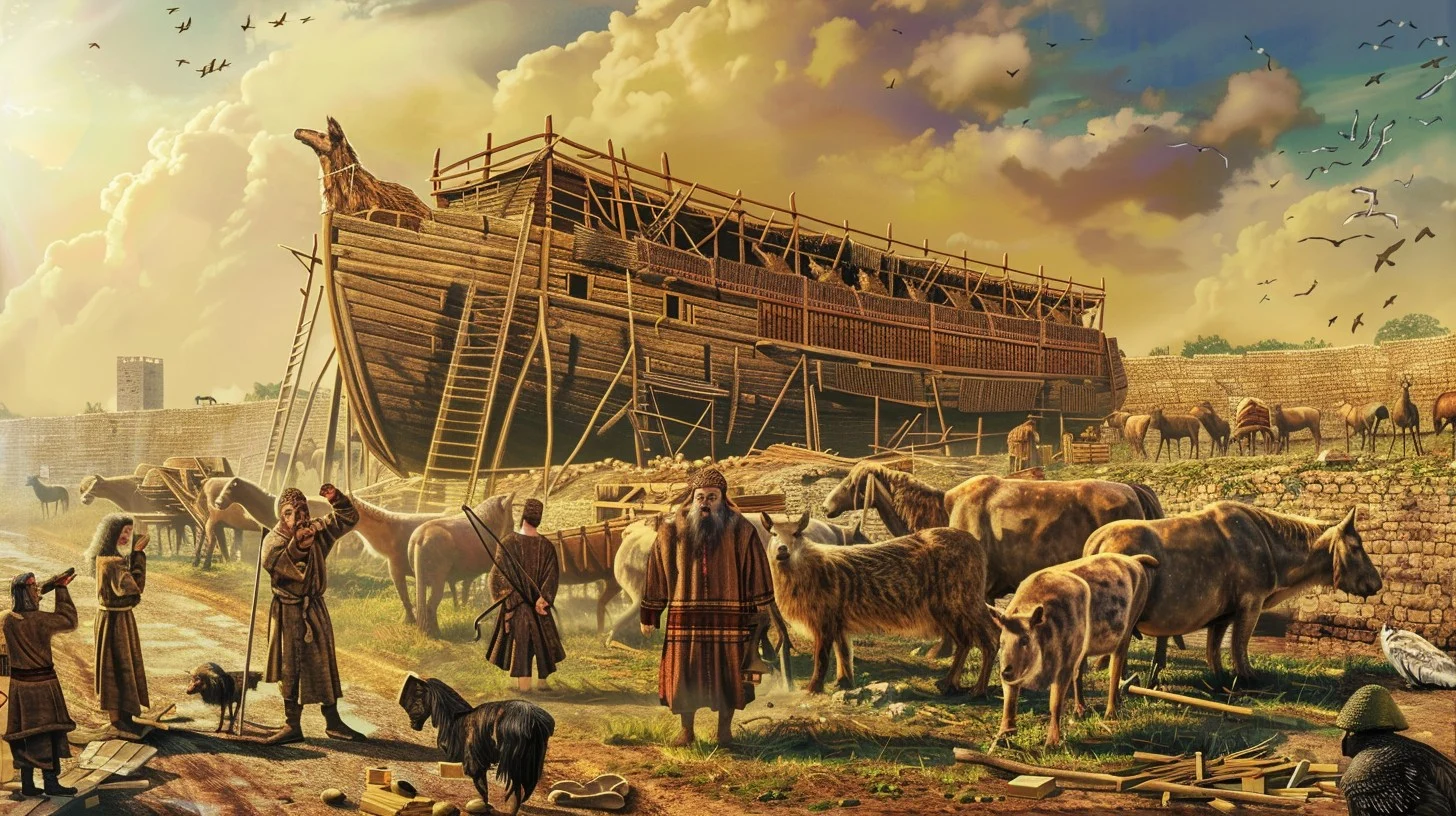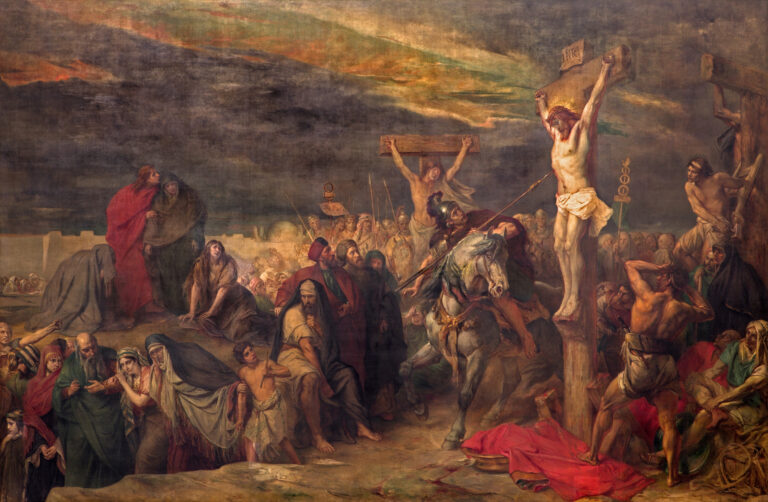How did the population grow from just eight People From Noah’s Ark to 8 Billion?
A Mathematical Journey of Human Population Growth
Have you ever wondered how humanity grew from just eight people on Noah’s Ark to today’s vast population? This remarkable journey from such a small beginning to our current global community of nearly 8 billion souls represents one of the most extraordinary examples of God’s blessing to “be fruitful and multiply.”
According to biblical chronology, the Great Flood occurred around 2345 B.C., leaving only eight survivors – Noah, his wife, their three sons, and their sons’ wives – to repopulate the entire Earth.
What many fail to realize is that this tremendous growth required only 30 population doublings over approximately 4,500 years. This is achievable with a modest annual growth rate of 0.464% – well within reasonable historical parameters. Throughout the Scriptures and human history, we see evidence of this exponential pattern at work.
Let us consider the milestones of this population expansion. The world reached its first billion inhabitants around 1800, doubled to 2 billion by 1930, and achieved 3 billion by 1960. This acceleration becomes even more profound when we examine biblical examples like the Hebrew nation in Egypt, which grew from Jacob’s family of 70 souls to approximately 2 million people in just 400 years.
In this article, I will explore the mathematical models that explain Earth’s population growth from the eight survivors of Noah’s Ark to our current global community. We will examine how such remarkable expansion was possible, address common objections raised against rapid population growth, and demonstrate how these numbers align perfectly with biblical timelines.
This shows the extent of God’s divine plan working through human history, connecting our present world directly back to those eight individuals who stepped off the Ark onto a cleansed Earth.
Biblical Foundation: The Eight Souls Who Survived the Great Flood
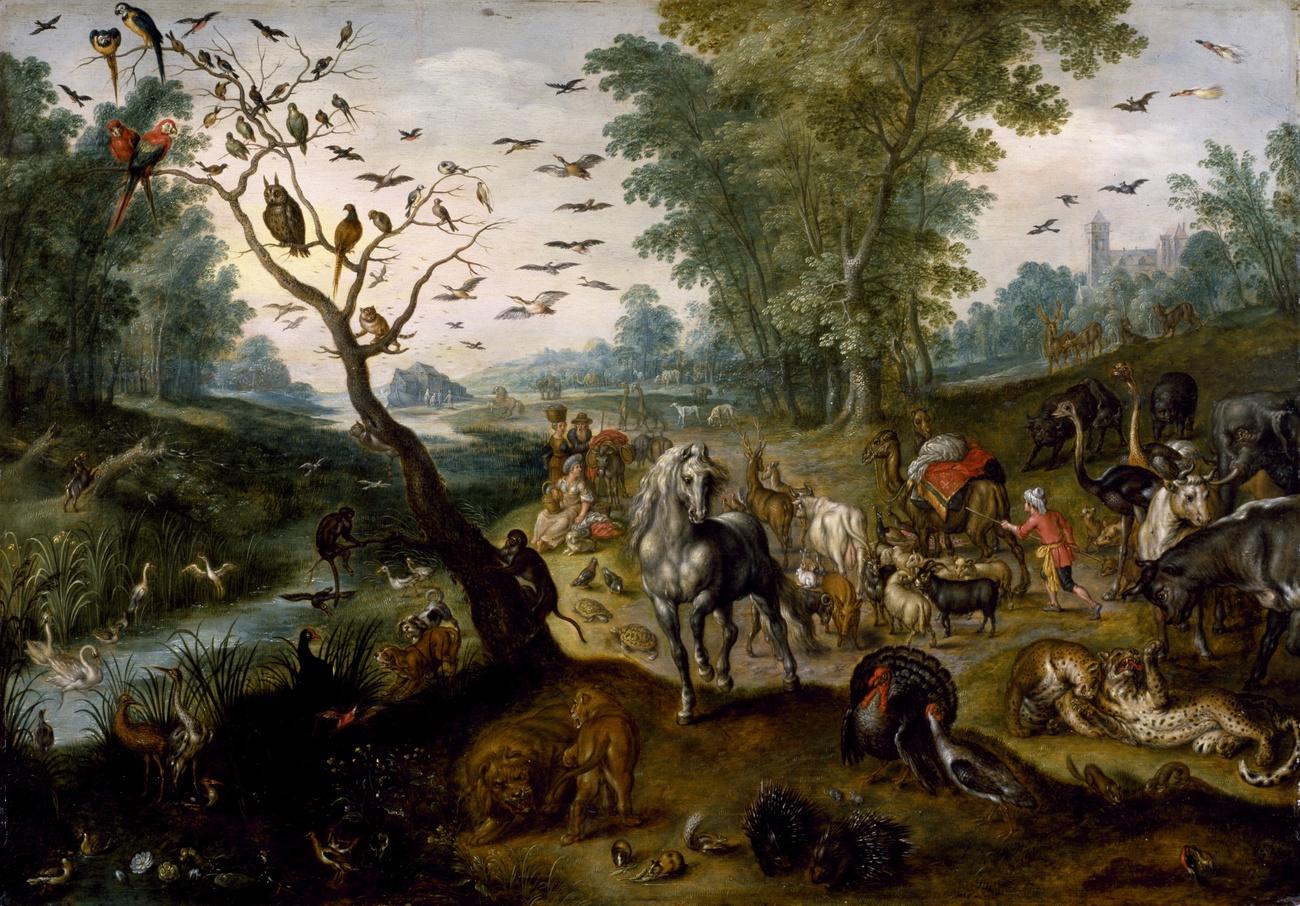
Image Source: Art – The Walters Art Museum
The story of Noah’s Ark represents one of the most significant population bottlenecks in human history—a moment when the Almighty reduced humanity to just eight individuals. The Book of Genesis provides remarkable detail about this pivotal event, establishing the foundation for all subsequent human population growth through these few souls who found favor in God’s eyes.
The Genesis Account of the Flood Survivors
As we read in the Scriptures, Noah was “a righteous man, blameless in his generation” who “walked with God” while the world around him descended into corruption and violence. The Lord made a covenant with Noah, promising to save him and his family from the impending destruction that would cleanse the Earth of wickedness [3].
This selection wasn’t arbitrary—the Scriptures emphasize Noah’s exceptional moral character amid widespread sin. The Lord provided precise instructions for building an ark that would preserve not only Noah’s family but also representatives of every animal kind, ensuring life would continue after the waters receded [3].
How Many People Were on Noah’s Ark According to Scripture?
The biblical text clearly identifies eight people who survived the Flood. Genesis 7:13 specifically states: “On that very day Noah and his sons, Shem, Ham and Japheth, together with his wife and the wives of his three sons, entered the ark” [3]. This count is confirmed in the New Testament where 1 Peter 3:20 declares that “eight in all, were saved through water” [3].
These eight survivors included:
- Noah
- Noah’s wife (unnamed in Scripture)
- Shem (Noah’s son)
- Ham (Noah’s son)
- Japheth (Noah’s son)
- Shem’s wife
- Ham’s wife
- Japheth’s wife
These eight individuals became the ancestors of all post-Flood humanity. As Genesis 9:19 affirms, “from them came the people who were scattered over the whole earth” [3].
Post-Flood Family Structure and How God’s Blessing to Multiply
After the waters receded and Noah’s family exited the Ark, they faced the monumental task of repopulating the Earth. God explicitly blessed them, commanding: “Be fruitful and multiply” [3], an instruction carrying special significance compared to similar directions given to Adam and Eve [3].
Initially, Noah’s family settled in the mountains of Ararat (modern-day Armenia) [26] before gradually expanding into the plains of Mesopotamia. The post-Flood world presented numerous challenges—the environment was significantly altered, food sources needed to be established, and this small family had to embrace their role as humanity’s new beginning.
The Scriptures tell us that Noah lived an additional 350 years after the Flood [26], providing ample time for substantial population growth through his descendants. His sons began having children, with Genesis recording at least 16 grandsons among Noah’s three sons [27]. These individuals formed the foundation of distinct people groups that would eventually populate the entire Earth.
Though the Bible doesn’t provide precise details about how quickly the population grew initially, the post-Flood world apparently offered favorable conditions for rapid expansion [3]. This shows the extent of God’s providence—from these eight survivors approximately 4,500 years ago, humanity has grown to today’s population of about 8 billion people [8]. This is consistent with the biblical timeline and demonstrates how God’s command to “be fruitful and multiply” has been fulfilled through the ages.
Exponential Growth: God’s Mathematical Design for Human Multiplication

Image Source: ResearchGate
The exponential function reveals God’s extraordinary design for human population growth from the eight souls aboard Noah’s Ark to today’s billions. Unlike linear growth, where increase occurs at a constant rate, exponential growth accelerates over time, producing results that might seem impossible yet perfectly align with both Scripture and historical data.
What does mathematics reveal about how quickly populations can double?
The Rule of 72 provides a simple yet powerful insight into God’s provision for human multiplication. By dividing 72 by the annual percentage growth rate, we can estimate the years required for a population to double [9]. For example:
- At 1% annual growth, a population doubles every 72 years
- At 2% annual growth, doubling occurs in just 36 years
- At 3% annual growth, doubling happens approximately every 24 years
This mathematical principle illuminates how Noah’s family could have expanded rapidly. With the divine blessing to “be fruitful and multiply” and the longer lifespans recorded in Scripture, a 3% annual growth rate would be entirely reasonable [10]. Under such conditions, just 10 doublings would transform 8 people into over 8,000 within 240 years—more than sufficient to establish the civilizations we read about in early Genesis.
Compound Growth vs. Linear Growth: A Divine Pattern
How does exponential growth differ from linear patterns? Let us consider two contrasting models:
- Linear growth: Adding a fixed number each year (1,000 people annually would yield only 50,000 after 50 years)
- Exponential growth: Multiplying by a percentage each year (3% growth would transform 8 people into approximately 1,030 people in just 50 years)
Exponential growth occurs when “a quantity grows at a rate directly proportional to its present size.” When a population is 3 times larger, it grows 3 times faster; at 10 times larger, it grows 10 times faster. This self-reinforcing pattern reveals the divine wisdom behind the command to “be fruitful and multiply” [12].
What is the Impact of Small Growth Rate Changes?
Perhaps most striking is how minor variations in growth rates produce enormous differences over centuries. A mere 1% difference—such as 3% versus 2%—can reduce doubling time by 12 years. Over multiple generations, such differences compound dramatically.
The world’s population growth rate peaked at 2.2% in 1962-1963 but has since halved [13]. Nevertheless, even with declining growth rates, our global population continues increasing, reaching 7.8 billion by mid-2020 [14]. This demonstrates another mathematical reality: population momentum—the continued growth even after fertility rates decline.
From the eight people on Noah’s Ark to today’s 8 billion inhabitants represents approximately 30 population doublings. Using the Rule of 72, we can calculate that this exponential expansion required only a moderate annual growth rate of 0.464% over 4,500 years—entirely plausible when comparing with historical growth patterns [14].
This shows the extent of God’s providence—that through a mathematical principle as elegant as exponential growth, humanity could fulfill the divine command to replenish the earth, even starting from just eight souls.
What are the Critical Variables in God’s Design for Post-Flood Population Growth?
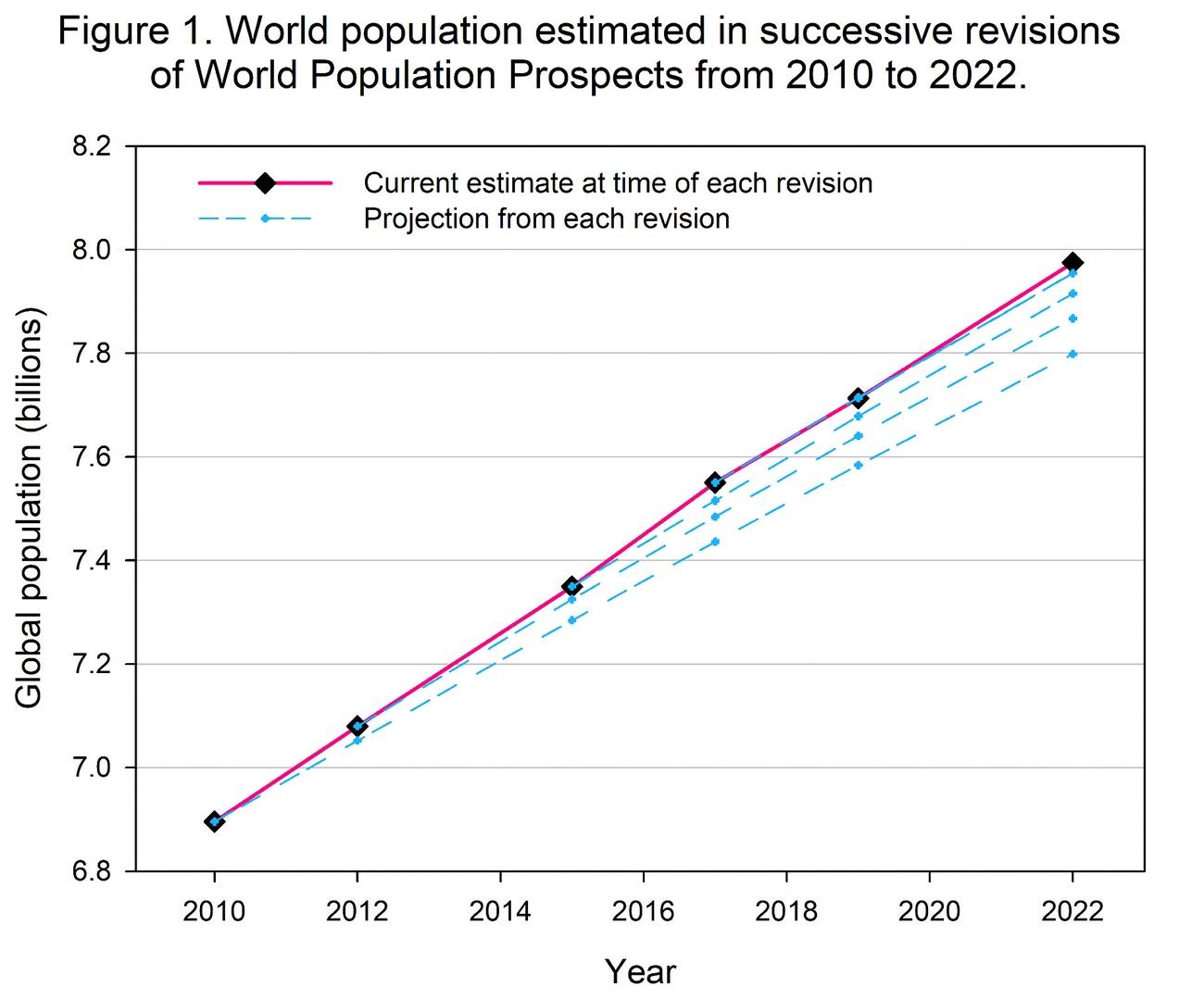
Image Source: – The Overpopulation Project
What factors shaped humanity’s remarkable expansion from the eight Flood survivors to today’s billions?
Throughout the Scriptures and historical records, we find several critical variables that explain both rapid growth periods and occasional slowdowns in human population development.
1) The Decline of Human Lifespans After the Flood
One of the most profound changes recorded in Scripture is the dramatic decline in human lifespans following the Great Flood. This pattern reveals God’s systematic reduction of human longevity:
- Noah lived 950 years [15]
- Noah’s son Shem: 600 years [15]
- Shem’s descendants: 438 years, then 433 years [15]
- Abraham: 175 years [16]
- Jacob: 147 years [16]
- Moses: 120 years [17]
This decay follows a mathematical power function where each generation lived approximately 88% as long as the generation prior, with an impressively consistent R-squared value of 0.94 [18]. This implies that God ordained a gradual reduction in lifespan—from nearly a millennium to modern expectations—which significantly altered reproductive patterns and population growth rates throughout human history.
2) Changes in Childbearing Patterns Through the Ages
How have fertility trends shifted across human history? In recent decades alone, the transformation has been remarkable. From 1990 to 2019, fertility rates for women aged 20-24 declined by 43%, while rates for women 35-39 increased by 67% [19]. The median age at which American women give birth rose from 27 in 1990 to 30 in 2019 [19].
In the post-Flood world, families likely had more children at younger ages due to three main factors:
- The divine blessing to “be fruitful and multiply”
- Longer lifespans enabling extended fertility periods
- Socioeconomic patterns favoring larger families
This shows the extent of change in human reproduction over time. Currently, the global fertility rate stands at just 2.3 children per woman (2023), compared to 4.9 in the 1950s [20] – a dramatic reduction from what we can reasonably infer about ancient families.
3) God’s Provision and Environmental Constraints
What environmental factors has God established to regulate population growth? Food availability remains perhaps the most critical environmental factor affecting population size and expansion [21]. Additionally, water access, suitable shelter, and population density all function as limiting factors that influence how quickly human groups can grow [21].
Modern climate changes introduce additional complications. Extreme weather events damage infrastructure and displace populations, especially in vulnerable low-elevation coastal zones that contain over 10% of the world’s population despite representing only 2% of land area [7]. As population pressures mount, essential resources become scarcer, potentially leading to competition and conflict [22].
4) The Profound Impact of Population Bottlenecks
Throughout human history, population bottlenecks—sharp reductions in population size due to environmental events or human activities—have profoundly shaped human genetic diversity. Research analyzing 460 distinct population groups found that over half had experienced significant bottlenecks [23]. These events reduce genetic variation within affected populations, sometimes permanently altering their demographic trajectory.
Recent examples illuminate these effects. The 2018 Camp Fire caused an 83.2% population drop in Paradise, California [24], while Hurricane Katrina displaced 53.4% of New Orleans’ population—a deficit the city hasn’t recovered from fifteen years later [24]. Climate-related disasters have increased by 749% since 1980, from 3.3 annually to 28 in 2023 alone [25].
Population bottlenecks aren’t merely modern phenomena. They’ve occurred throughout human history, with the most significant example being the Great Flood approximately 4,500 years ago, when humanity was reduced to just eight individuals on Noah’s Ark. From this perspective, the biblical account of eight souls saved through water represents the most significant bottleneck in human population history, making our subsequent growth to billions even more remarkable.
This demonstrates God’s providential care—that from such a small beginning, through His blessing and according to His divine plan, humanity could recover and flourish despite facing numerous challenges and constraints throughout the ages.
From Babel to Modern Times: Tracing God’s Hand in Population Growth
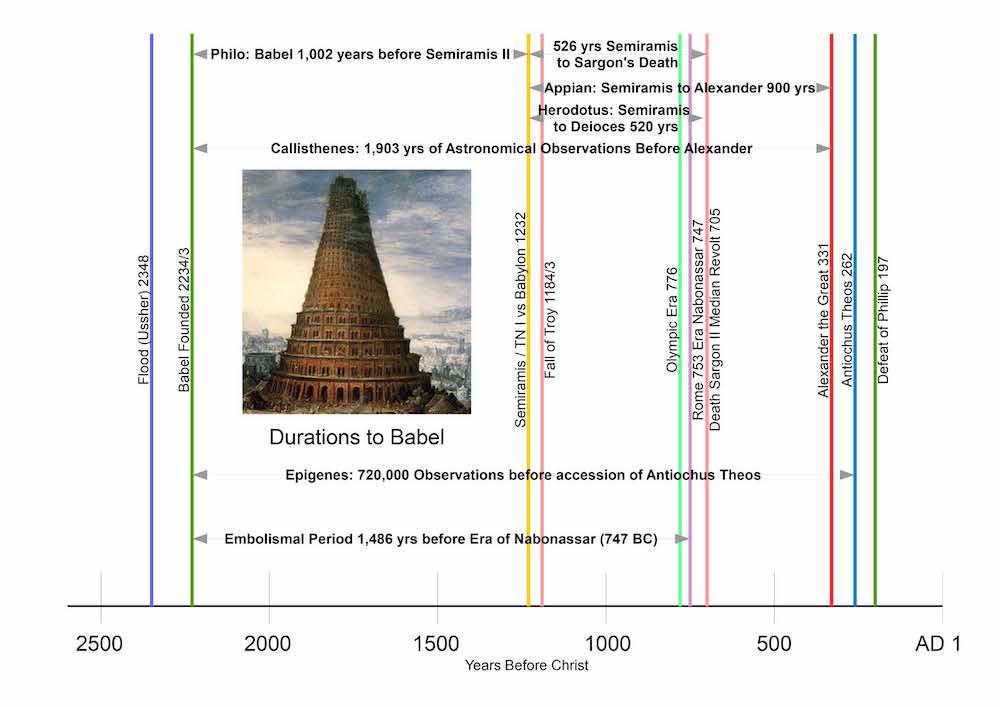
Image Source: Answers Research Journal
Following the recovery of mankind after the Great Flood, humanity faced another pivotal moment at the Tower of Babel—when God scattered people across the globe, establishing the foundation for distinct civilizations and languages. Throughout the Scriptures the notion of God’s continuous guidance in human population growth is implied, even as mankind repeatedly turned away from His will.
The Tower of Babel Dispersal: How Many People Were Present?
What was the population size at the time of Babel? This dispersal occurred approximately a century after the Flood, during the time of Peleg, whose name means “division” [3]. The Babel event represents the third major demographic expansion point in human history, after Adam and Eve’s initial multiplication and the post-Flood regrowth [3].
Mathematical models suggest several possibilities:
- A modest population exceeding 1,000 individuals within 100 years after the Flood [3]
- More optimistic scenarios showing 10,000 or even 40,000 people with favorable childbearing patterns [3]
- By 340 years after the Flood, most demographic models indicate the population could have reached tens of thousands [3]
This shows the rapid early growth that followed God’s blessing to Noah’s family to “be fruitful and multiply.”
Roman Era Population: When Biblical and Secular History Converge
Throughout subsequent millennia, humanity expanded gradually across continents. By the time of Our Lord Jesus Christ’s birth during the Roman Empire, historical records provide more concrete population figures. At its greatest extent under Emperor Trajan (117 AD), the Roman Empire contained between 45-76 million people [26].
Some scholars place the empire’s population during Augustus’s reign at approximately:
- 54 million according to some estimates [26]
- Closer to 60 million according to others [27]
- Comprising about 15-21% of the world’s total population, estimated between 200-300 million people [28]
These figures are consistent with biblical accounts of the widespread nature of the Roman Empire during the time of Christ.
The Billion Milestone: God’s Plan Unfolds Across Centuries
Human population growth remained relatively slow until a dramatic acceleration began in more recent times. I would note that the world reached its first billion inhabitants only in 1804 [29], after all of human history since Creation. Indeed, the early population milestones required considerable time—123 years passed before reaching 2 billion in 1927, followed by 33 years to reach 3 billion in 1960 [30].
How rapidly has humanity multiplied in recent times?
Consider this: the world added its fourth billion in just 14 years (1974), fifth billion in 13 years (1987), sixth billion in 12 years (1999), and seventh billion in 12 years (2011) [29]. On November 15, 2022, humanity crossed the 8 billion threshold [31].
Importantly, growth rates are now slowing—while it took 12 years to add the eighth billion, demographers project approximately 15 years until we reach 9 billion in 2037 [31]. This declining growth rate is expected to continue, with peak population projected around 10.4 billion in the 2080s [5].
As Catholics, we believe that God’s hand guides the unfolding of human history. The population patterns we observe from Babel to modern times reveal an ordered progression that aligns perfectly with both Scriptural accounts and mathematical principles. This is not mere coincidence but evidence of divine providence working through the generations of mankind.
Why Ancient Populations Did Not Always Grow Rapidly
Should you wonder why populations throughout history didn’t always expand at consistent rates, historical constraints provide clear answers. Plagues and famines decimated populations regularly—when bubonic plague entered Europe in the mid-1300s, nearly a quarter of the entire population died within one year [33]. Likewise, studies of London parishes from 1558-1625 reveal death rates consistently overshadowed birth rates [33].
The Holy Scriptures contain numerous references to famines, plagues, and wars that periodically reduced human populations. Additionally, Earth’s finite resources impose natural limits, as demonstrated by contemporary population models examining carrying capacity [36].
Overall, criticism of biblical population models often stems from improper application of growth formulas or ignorance of historical population constraints. When correctly modeled using realistic parameters, population growth from Noah’s family to today’s billions proves mathematically sound and aligns perfectly with the biblical account of human history.
Conclusion: God’s Providence from Eight Souls to Eight Billion
Mathematical models reveal God’s providential hand in humanity’s expansion from eight souls on Noah’s Ark to today’s global population of 8 billion. Through careful analysis of exponential growth patterns, historical records, and demographic data, we see this remarkable journey required only 30 population doublings over approximately 4,500 years – achievable with a modest annual growth rate of 0.464%.
The Holy Scriptures align seamlessly with scientific evidence when we examine critical variables. The extraordinary lifespans recorded immediately after the Flood, favorable environmental conditions, and most importantly, God’s explicit blessing to “be fruitful and multiply” created ideal circumstances for rapid initial population growth. Though natural disasters, wars, and plagues periodically reduced numbers throughout history, humanity consistently recovered and expanded according to God’s divine plan.
Population milestones tell this story with remarkable clarity – from estimated tens of thousands at Babel, to hundreds of millions during Roman times, reaching our first billion in 1804, and now 8 billion in 2022. These figures match mathematical models accounting for changing growth rates, environmental constraints, and historical events. Much is unknown about certain periods, particularly the earliest generations after the Flood, yet the overall pattern confirms what Scripture has always taught.
As Catholics, we understand that true science and faith cannot contradict each other, for God is the author of both natural and divine revelation. Rather than contradicting Scripture, scientific analysis of population dynamics supports the biblical narrative. This shows the extent that modern demographic tools can help us understand how eight people truly could become billions within the biblical timeline.
I highly recommend further study on this topic for those seeking to deepen their understanding of how God works through human history. The mathematical principles behind population growth reveal the elegant design of our Creator, making Noah’s Ark not merely a story of faith, but a mathematically sound foundation for human population growth and a testament to God’s faithfulness to His covenant.
Praise God for His wisdom in designing such remarkable growth patterns, and for His providence in bringing humanity from those eight souls on the Ark to the billions who inhabit His creation today.
FAQs
Q1. How did Earth’s population grow from Noah’s family to 8 billion people? According to mathematical models, Earth’s population could have expanded from Noah’s family to 8 billion people through exponential growth over about 4,500 years. This would require approximately 30 population doublings at a modest annual growth rate of 0.464%.
Q2. What factors influenced population growth after the Flood? Key factors influencing post-Flood population growth included longer lifespans immediately after the Flood, favorable environmental conditions for expansion, and the divine blessing to “be fruitful and multiply.” However, natural disasters, wars, and plagues periodically reduced population numbers throughout history.
Q3. How does the biblical timeline align with known population milestones? The biblical timeline aligns with population milestones such as an estimated tens of thousands of people at the time of Babel, hundreds of millions during the Roman era, reaching the first billion around 1804, and 8 billion by 2022. These figures match mathematical models that account for changing growth rates and historical events.
Q4. What is the Rule of 72 and how does it relate to population growth? The Rule of 72 is a simple way to estimate population doubling time. By dividing 72 by the annual percentage growth rate, you can approximate how many years it takes for a population to double. This principle helps explain how rapid population growth could occur under favorable conditions.
Q5. How do scientists reconcile archeological evidence with biblical population growth models? Recent archeological findings increasingly align with biblical chronology. Population estimates and city identifications mentioned in Scripture have been archeologically confirmed. Additionally, genetic studies suggest shorter human timescales than previously assumed, supporting the possibility of rapid population growth from a small founding group.
References
[1] – https://en.wikipedia.org/wiki/Genesis_flood_narrative
[2] – https://www.chabad.org/library/article_cdo/aid/246609/jewish/The-Story-of-Noah-and-the-Ark-in-the-Bible.htm
[3] – https://www.gotquestions.org/how-many-people-were-on-Noahs-ark.html
[4] – https://biblescienceguy.wordpress.com/2014/05/28/1-population-growth-could-noah-fill-the-earth/
[5] – http://www.biblefellowshipunion.co.uk/2005/Jan_Feb/Flood2.htm
[6] – https://www.quora.com/What-is-the-story-of-Noahs-Ark-Who-survived-it-and-why-did-they-survive-it
[7] – https://growinginthespirit.com/noah-and-the-ark-a-numbers-deep-dive/
[8] – https://biblescienceguy.wordpress.com/2014/06/18/4-population-growth-how-many-died-in-noahs-flood/
[9] – https://www.icr.org/article/post-flood-repopulation-from-8-8000000000
[10] – https://en.wikipedia.org/wiki/Rule_of_72
[11] – https://betterexplained.com/articles/the-rule-of-72/
[12] – https://en.wikipedia.org/wiki/Exponential_growth
[13] – https://www.khanacademy.org/math/algebra/x2f8bb11595b61c86:exponential-growth-decay/x2f8bb11595b61c86:exponential-vs-linear-growth/v/exponential-vs-linear-growth
[14] – https://ourworldindata.org/population-growth-over-time
[15] – https://pmc.ncbi.nlm.nih.gov/articles/PMC8393076/
[16] – https://answersingenesis.org/bible-timeline/genealogy/did-adam-and-noah-really-live-over-900-years/?srsltid=AfmBOoqvMKHzoCZeBvpOURVv-wgLmtlCHUQRXyPAkiA3HuDg6vS3vaZ7
[17] – https://www.desiringgod.org/interviews/why-did-the-first-humans-live-for-so-long
[18] – https://aish.com/120-year-lifespan/
[19] – https://creation.com/rapid-decline-biblical-lifespans
[20] – https://www.census.gov/library/stories/2022/04/fertility-rates-declined-for-younger-women-increased-for-older-women.html
[21] – https://ourworldindata.org/fertility-rate
[22] – https://study.com/academy/lesson/population-ecology-environmental-effects-on-population-size.html
[23] – https://populationconnection.org/resources/population-and-climate/
[24] – https://greenly.earth/en-us/blog/ecology-news/why-population-growth-is-an-issue
[25] – https://news.berkeley.edu/2022/06/23/bottlenecks-that-reduced-genetic-diversity-were-common-throughout-human-history/
[26] – https://www.valuepenguin.com/longterm-change-population-natural-disaster
[27] – https://ssti.org/blog/development-impacts-disasters-revealing-longer-term-effects-regional-growth-0
[28] – https://creation.com/biblical-human-population-growth-model
[29] – https://en.wikipedia.org/wiki/Classical_demography
[30] – https://imperiumromanum.pl/en/roman-society/population-of-roman-empire/
[31] – https://www.unrv.com/empire/roman-population.php
[32] – https://en.wikipedia.org/wiki/World_population_milestones
[33] – https://en.wikipedia.org/wiki/World_population
[34] – https://www.un.org/en/global-issues/population
[35] – https://edition.cnn.com/2022/11/15/world/global-population-8-billion-un-intl-hnk/index.html
[36] – https://pmc.ncbi.nlm.nih.gov/articles/PMC5036973/
[37] – https://evolutionnews.org/2016/08/the_origin_of_m/
[38] – https://ncse.ngo/creationists-population-growth-bunnies-and-great-pyramid
[39] – https://www.ministrymagazine.org/archive/1978/12/science-and-religion
[40] – https://www.quora.com/How-do-some-people-reconcile-the-Bible-with-archeological-findings
[41] – https://journals.sagepub.com/doi/10.1177/20530196231172423
[42] – https://www.americanscientist.org/article/population-growth-technology-and-tricky-graphs
[43] – https://creation.com/articles/biblical-human-population-growth-model
[44] – https://pmc.ncbi.nlm.nih.gov/articles/PMC10387745/
